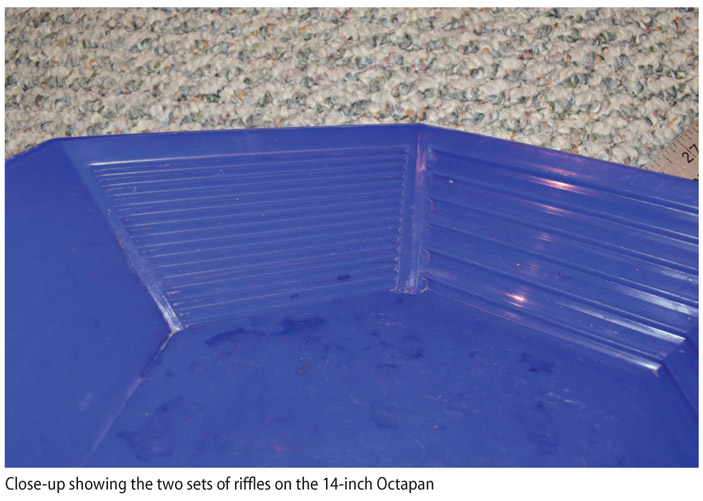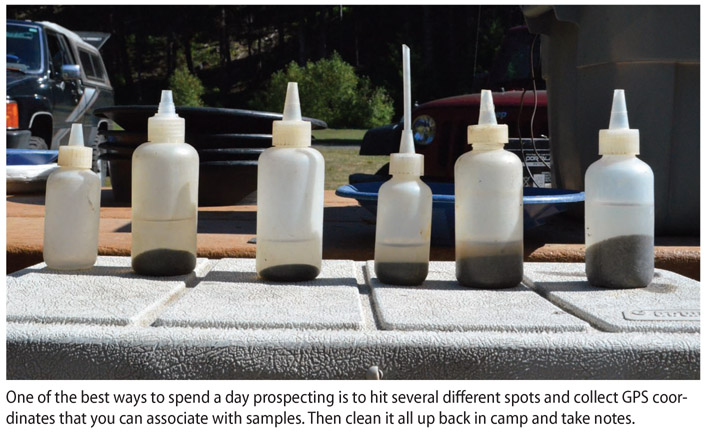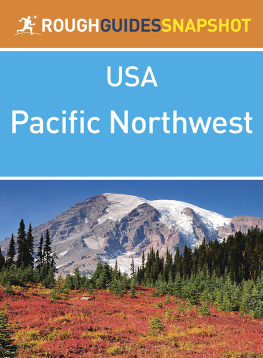ABOUT THE AUTHOR
Garret Romaine is an avid gold prospector, rock hound, and fossil collector with years of experience in the field. He is a longtime writer for Gold Prospectors magazine and is the author of The Modern Rockhounding and Prospecting Handbook; Rocks, Gems, and Minerals of the Southwest; Rocks, Gems, and Minerals of the Rocky Mountains; and Rockhounding Idaho, all from FalconGuides, as well as Gem Trails of Washington and Gem Trails of Oregon. Garret is a member of the Board of Directors of the Rice NW Museum of Rocks and Minerals in Hillsboro, Oregon.
ACKNOWLEDGMENTS
I ve been scouting out gold-panning trips around the Pacific Northwest since the 1970s. My dad and uncle would load up a pickup truck on Friday night and head out for the weekend to eastern Oregon on what they called sod trips, returning to the old dirt where they grew up. One time we panned concentrates from the old E&E Mine near Bourne with a tin plate; another time we found intriguing residues in an old ball mill near Susanville and brought them home in a coffee can. Ever since then, it has been a fascinating journey to far-flung old camps and abandoned mines and a quest for ever-better equipment.
Along the way these recon trips have involved a lot of old and new friends, and its been fun to teach newcomers how to pan or identify rocks and show them some of our favorite haunts. I know there are still a lot of folks that I would like to take on a trip, and I owe at least one local club a guided tour to Bohemia City. Heres a genuine Recon Salute to the many folks who helped me out in the field: Val and Josh Bailey; Tom Bohmker; Deb Chen; Pferron Doss; Dan Driscoll; Tim and Tonya Fisher; Frank Higgins; Josh Krause, Ellen Schippers, and their son Wyatt; Paul Leiker; Nathan OBrien; Ely Perry; Kevan Reedy; Martin Schippers; Dirk Williams; Jake and Kyle Riley; Terry Snyder; and Eric and Ford Veeder. Im sure I missed a few people, and for that I apologize.
Special thanks go to my family: my cousin John and his son Dougie Romaine; my uncle Doug Romaine and his wife, Janet; my father Garret L. Romaine; my son Nelson Romaine; daughter Amelia Perry Romaine; and most of all, my long-suffering wife, Cindy Romaine, who was there that fateful night when we got two flats at once and left the Boise National Forest on a flatbed truck headed for the nearest Les Schwab Tire Center. She tells the story better.
APPENDIX A: MODERN TOOLS
In my companion book, The Modern Rockhounding and Prospecting Handbook, available through FalconGuides, youll learn the basics of reading geology maps, understanding symbols, figuring out basic geology, and more. Here, youll get overview information about various types of machines and devices, and you can form your own opinion.
Buckets, Shovels, and Screens
Ive met quite a few prospectors who enjoy bringing home a nice bucket of concentrates and then pan in the warmth of their garage. They dont like stretching out into a creek or river, trying to find a deep spot, or risking a bad back, and they dont like getting their clothes and shoes wet when they inevitably slip. At home you can use warm water, stay out of the wind, put your panning tub up on a bench, add a drop of dispersant to cut down on surface tension, and bring in plenty of light. So the first tools you need out there are a bucket, a shovel, and a screen. And truthfully, the screens are optional but a good idea, so you arent bringing home a bunch of big rocks that you dont really need. Because the odds are billions and billions to one that youll ever screen a big nugget, you might as well use screens to improve the quality of your pay dirtwhether you pan it out in the field or bring it home.

Shovels, buckets, and screens do not require a dredging permit, and theyre quiet. Your goal is to dig a big hole, because the deeper you go, the bigger the gold in 99 percent of the deposits. So its up to you if you bring the same shovel that you use in the garden or get a shorter shovel with a nice handle. On some trips you may use a trowel more than any other shovel, especially if you are digging out crevices in bedrock. The more you dig, and the deeper you go, the better your chances, so these are your first tools to consider.
Gold Pans
Your next tool is the venerable gold pan. Some older folks skip this step and go straight to spiral pans, but every prospector should have a pan or two in his or her collection.

The only way to get good at gold prospecting is through practiceyou have to pan at least a dozen pans before you start to feel comfortable with sliding the heavies around, breaking up the muck, and trusting the riffles. There are twenty or more modern pan designs now, with sharp riffles, double sets of riffles for rough and fine panning, and all kinds of interesting shapes and additions. My personal favorite right now is a 14-inch octagonal pan with two sets of riffles and a broad, flat bottom. What this pan also helps with is avoiding a tendency to swirl material in a circular pattern, which only serves to spread the concentrates around on the bottom. What you want to do is continually push heavy material into the first riffle and lock it in there; you can start to feel more nonchalant about everything else in the pan. When you are first breaking down a big pan full of muck, you need to learn to shake the pan vigorously so that the heavy material at the bottom slides forward to that first notch. This is called stratifying, and it only works when you get the muck entirely into solution so that its behaving like a liquid. Once you get your material into suspension, gravity will pull things apart, with light material like clay and debris floating to the top, and heavy material, like gold, garnets, and black sands, to the bottom. So less swirling as you get closer to the end, and more side-to-side action. Pack that first riffle, and trust science.
The great thing about panning is that its easy, and its almost never banned. Even Wild and Scenic Rivers are open to panning below the high-water line. National parks and monuments are not open, however. State parks also restrict panning; but county parks, US Forest Service, and BLM campgrounds are usually open. So its the first skill you need to gain as a prospector.
Snuffer Bottles
Once youve panned down a pan to where you can see what you have, you need some way to save the sample. You can use a wide-mouthed glass jar and just dump your concentrates in, although its good to have a second pan underneath the jar. Most modern prospectors use a plastic snuffer bottle, which is a small plastic bottle with a removable straw. Once youre good at it, you can slurp up your black sands quickly, and there are two modeswithout the straw, for bulk recovery, and with the straw, for finer work. Once you get good with a snuffer bottle, you can make your specimen cleaner by picking up just the black sands and leave the gold, for exampleif you have plenty of gold. You can easily fill up the small glass specimen jars by removing the straw and emptying the contents of the snuffer bottle; the heavies will concentrate in the tip.

Some folks use an adapted syringe to suck up their concentrates, then dump them into a specimen jar. Ive seen someone use a turkey baster, too, then dump the concentrates into a finishing pan or a jar. When touring lots of places, Ill often just use one snuffer per location, and then figure it all out later. Thats where good labeling comes in, and taking notes.







